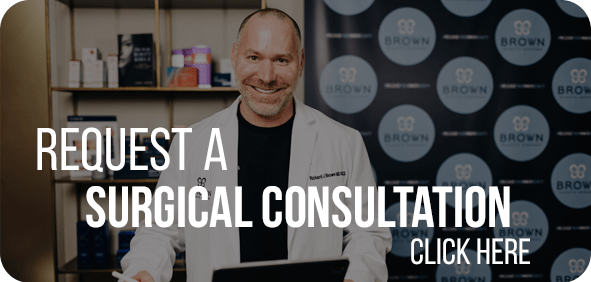Nose Surgery Myths & TruthsHere at the offices of board-certified plastic surgeon Dr. Richard J. Brown, we often see patients who are considering having a nose surgery, or rhinoplasty. We have noticed a few common misconceptions about rhinoplasty throughout our years of working with patients, and though it is important to be aware of risks and complications that may arise from a surgery, it is just as important to understand which common beliefs surrounding nose reshaping are truths and which are myths.
Myth: People only get rhinoplasty to enhance their features.
Rhinoplasty is indeed a popular surgery for individuals who are looking to change the shape of their nose for aesthetic reasons, but medically necessary rhinoplasty is actually a more common surgery. Rhinoplasty is usually for people who wish to correct a deviated septum, or crooked nostrils, thereby improving their breathing function.
Truth: Rhinoplasty causes bruising around the nose and eyes.
Though rhinoplasty is a minimally invasive procedure, minor bruising may still occur. This is due to normal bleeding during the surgery and the natural healing process afterward. The area may appear bruised and discolored even if it does not feel tender, but should regain its normal appearance within one or two weeks.
Related: Find Out if Rhinoplasty is the Right Procedure for You
Myth: Like any surgery, rhinoplasty leaves scars.
There are two different types of rhinoplasty — closed rhinoplasty, and open rhinoplasty. Open rhinoplasty involves making an incision on the underside of the nose to access and manipulate the central cartilage. The incision is usually well hidden, but minimal scarring may still be visible depending on the scope of the surgery. Closed rhinoplasty, however, is performed through small incisions on the inside of the nostril. This is the preferred method for smaller adjustments, and no scarring will be visible.
Truth: Rhinoplasty may affect your breathing.
Swelling is the body’s natural response to tissue stress. Some swelling may occur during and after your rhinoplasty as a result of the tissues in your nose being disturbed. This swelling may indeed make it more difficult to breathe through your nose for a while, but it usually resolves within 6 weeks following surgery. If you opted to have rhinoplasty to improve your breathing function, improvement may not be immediate. However, normal breathing capacity is usually restored within one to three months.
Related: What Restrictions are there During Rhinoplasty Recovery?
Myth: Only women get rhinoplasty.
Rhinoplasty is one of the most common plastic surgeries among men, who choose to have nose surgery not only to enhance their physical appearance, but also to correct nasal deformities that make breathing difficult. The number of men who choose to have a rhinoplasty continues to climb each year.
If you are considering having a rhinoplasty or any other plastic surgery, don’t hesitate to call Dr. Richard J. Brown at 480-568-3804 to schedule an initial consultation.



